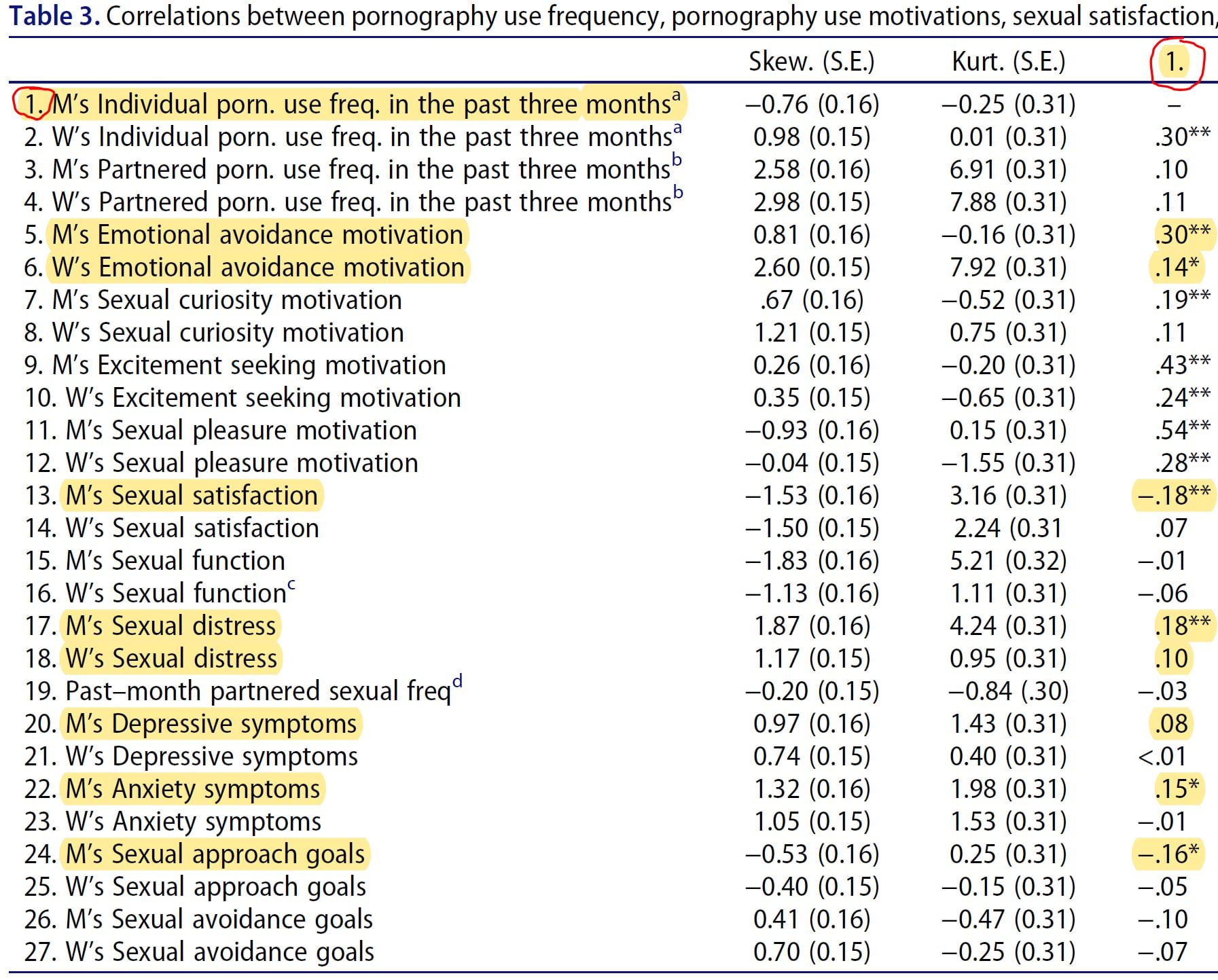IHE: Nationally representative studies usually report that the % of women in long-term relationships that mgbe nile eji porn dịtụ obere. Ya mere, nchoputa nke porn kacha elu maka ụmụ nwanyị na-emetụta nsonaazụ ka mma na-adaberekarị na pasent ole na ole nke ụmụ nwanyị na-eji porn na-agbanwe agbanwe. Nke a na-eme ka nchọpụta ndị a bụrụ ihe na-atọ ọha na eze ụtọ karịa ka ndị dere ha ga-eme mgbe ụfọdụ ka anyị kwere.
Ihe na-adọrọ mmasị bụ nsonaazụ maka ụmụ nwoke, ebe imirikiti ụmụ nwoke na-eji porn. Ọmụmụ ihe ugbu a banyere ndị di na nwunye kwuru na ojiji nwoke ahụ na-emetụta nke ya enwe afọ ojuju mmekọahụ, nchegbu, ịda mbà n'obi, nsogbu mmekọahụ ka ukwuu, na izere mmetụta uche. Egwuregwu nwoke ahụ na-ejikọtaghị na ebumnuche mmekọahụ (izere / ịbịaru).
~~~~~~~~~~~~~~~~~~~~~~~~~~~~~~~~~~~~~~~~~~~
J Sex Res . 2021 Mar 16;1-15.
dị: 10.1080 / 00224499.2021.1893261.
Beáta Bőthe 1 , Marie-Pier Vaillancourt-Morel 2 , Sophie Bergeron 1
PMID: 33724108
DOI: 10.1080/00224499.2021.1893261
nkịtị
Pornography use is prevalent, even among partnered individuals. Although pornography use motivations represent key predictors of sexual behaviors, prior studies only assessed the associations between pornography use frequency and sexual wellbeing, with mixed results. This cross-sectional dyadic study examined the associations between partners’ individual and partnered pornography use frequency, motivations, and sexual wellbeing. Self-report data from 265 couples (Mage_men = afọ 31.49; SD = 8.26; Mage_women = afọ 29.36; SD = 6.74) were analyzed using an actor-partner interdependence model. Men’s greater emotional avoidance motivation was related to their own lower sexual function (β = -.24, p = .004) and greater sexual distress (β = .19, p = .012), while their higher sexual curiosity motivation was related to higher partnered sexual frequency (β = .15, p = .031), their own greater sexual satisfaction (β = .13, p = .022), sexual function (β = .16, p = .009), and lower sexual distress (β = -.13, p = .043). Women’s higher partnered pornography use frequency was associated with their own greater sexual function (β = .15, p = .034) and lower sexual distress (β = -.14, p = .012). Additionally, women’s higher individual pornography use frequency (β = .33, p < .001) and lower sexual pleasure motivation (β = -.35, p = .002) were associated with higher partnered sexual frequency. No partner effects were observed. Findings highlight that women’s pornography use frequency and each partner’s motivations might play crucial roles in couples’ sexual wellbeing.
